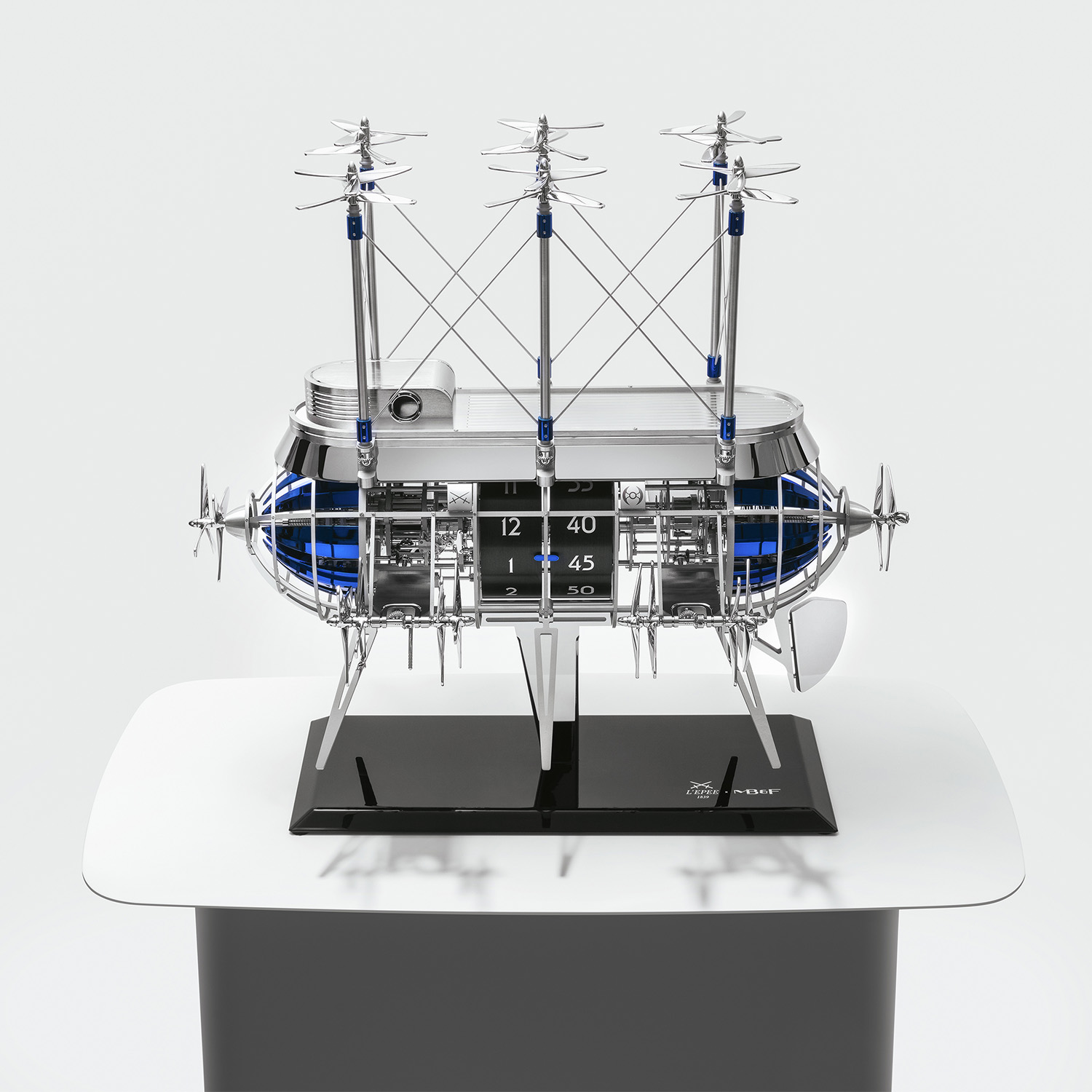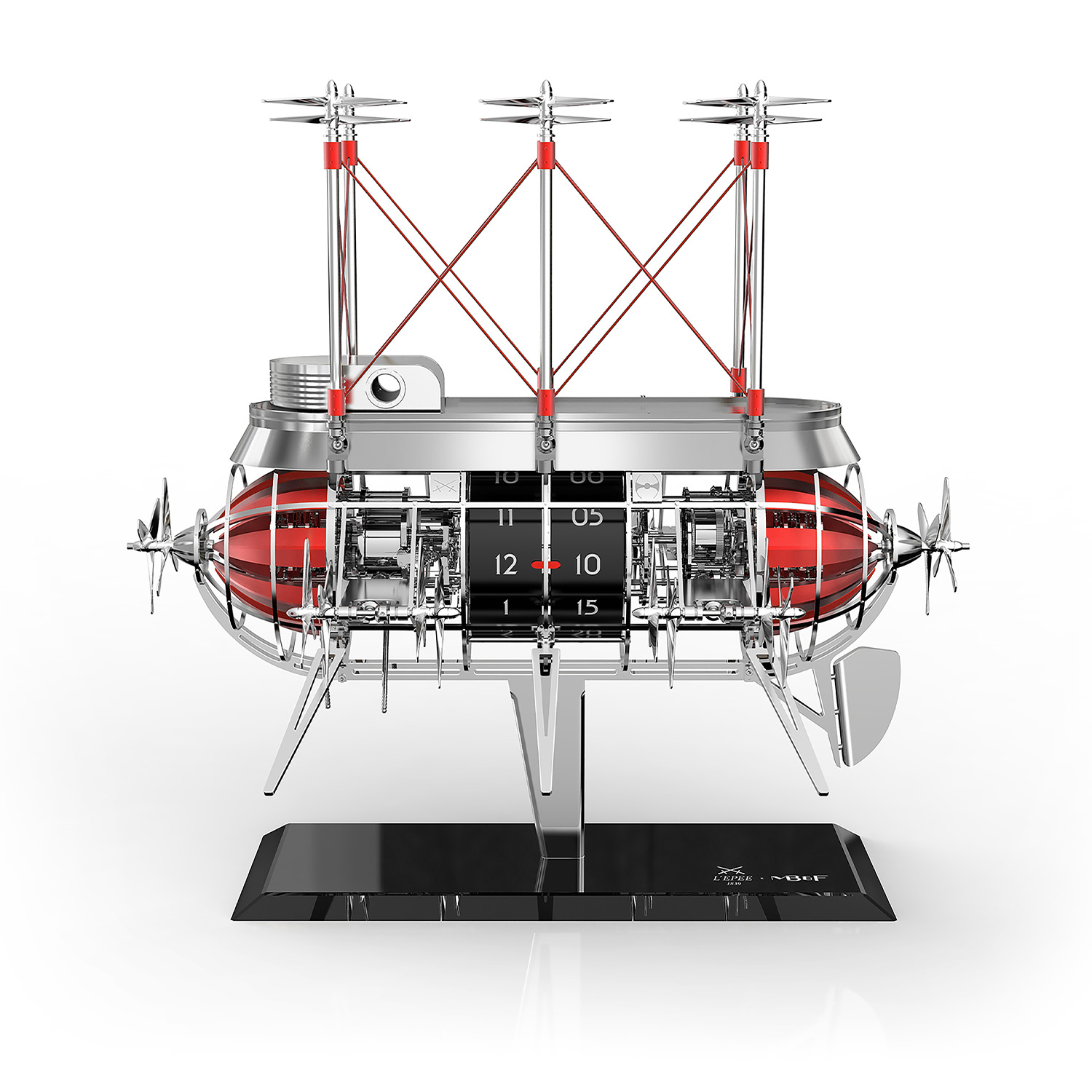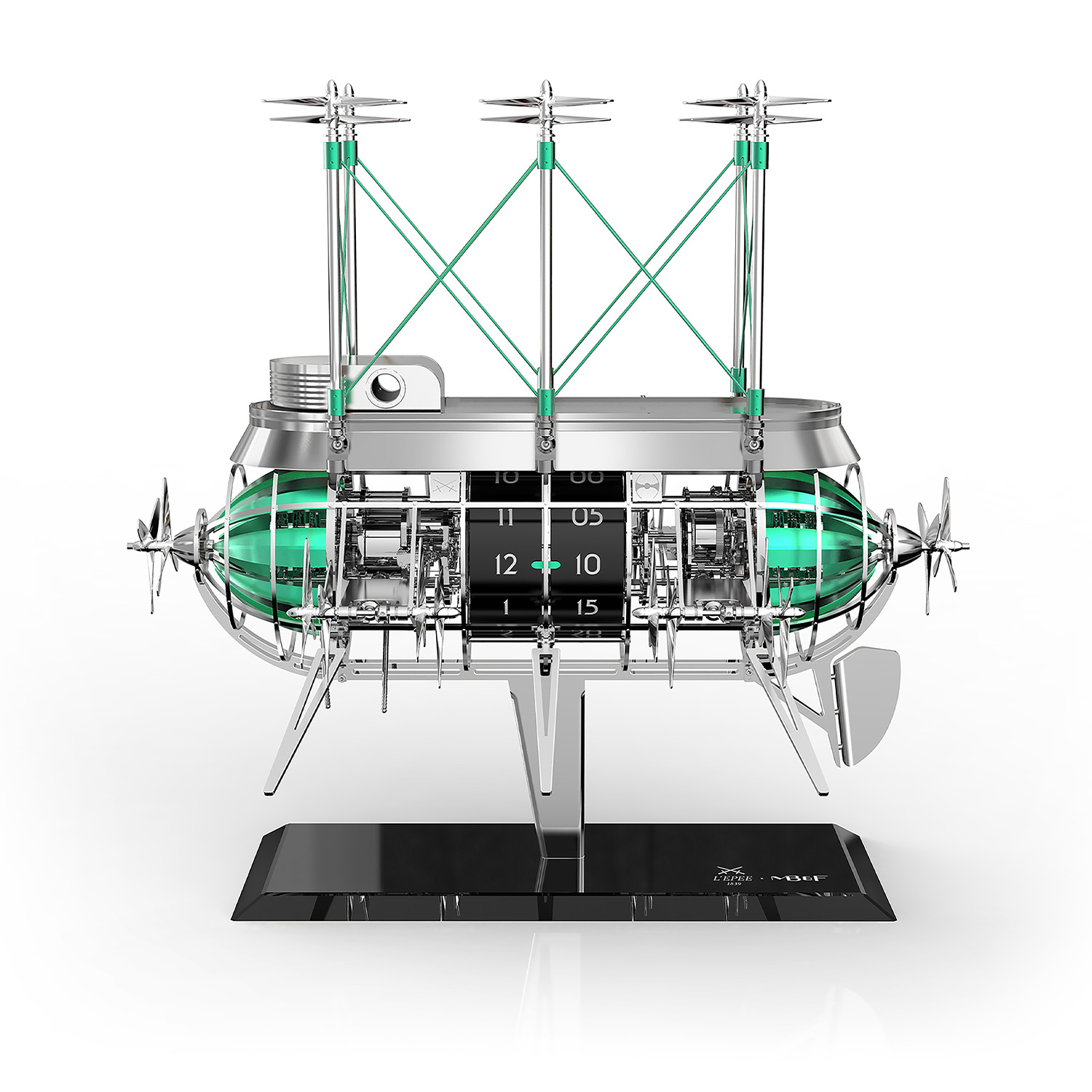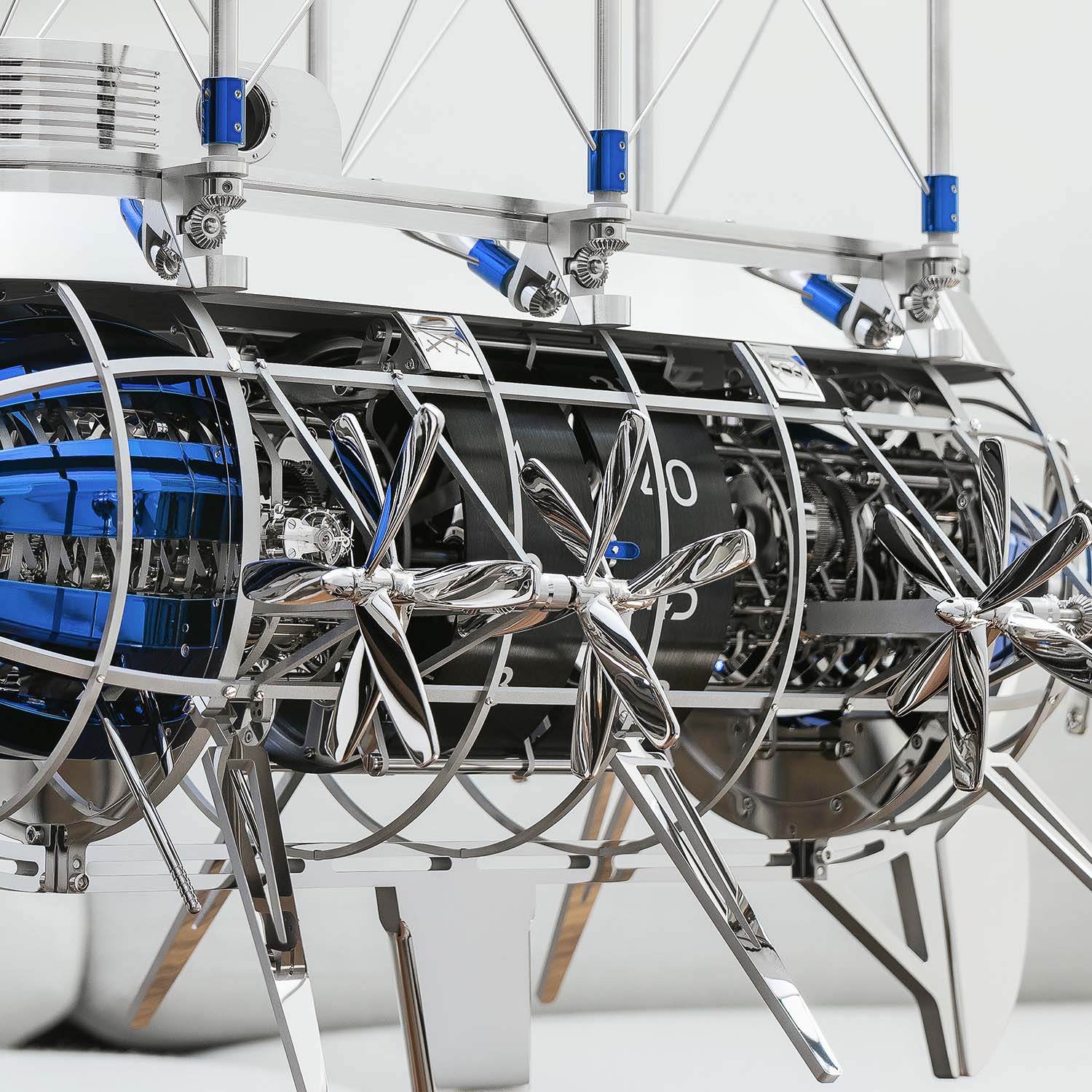The L’Epée 1839 X MB&F Albatross, the Friends’ Most Audacious Co-Creation Ever
This 1520-component flying ship with striking hour function is ready for lift off.
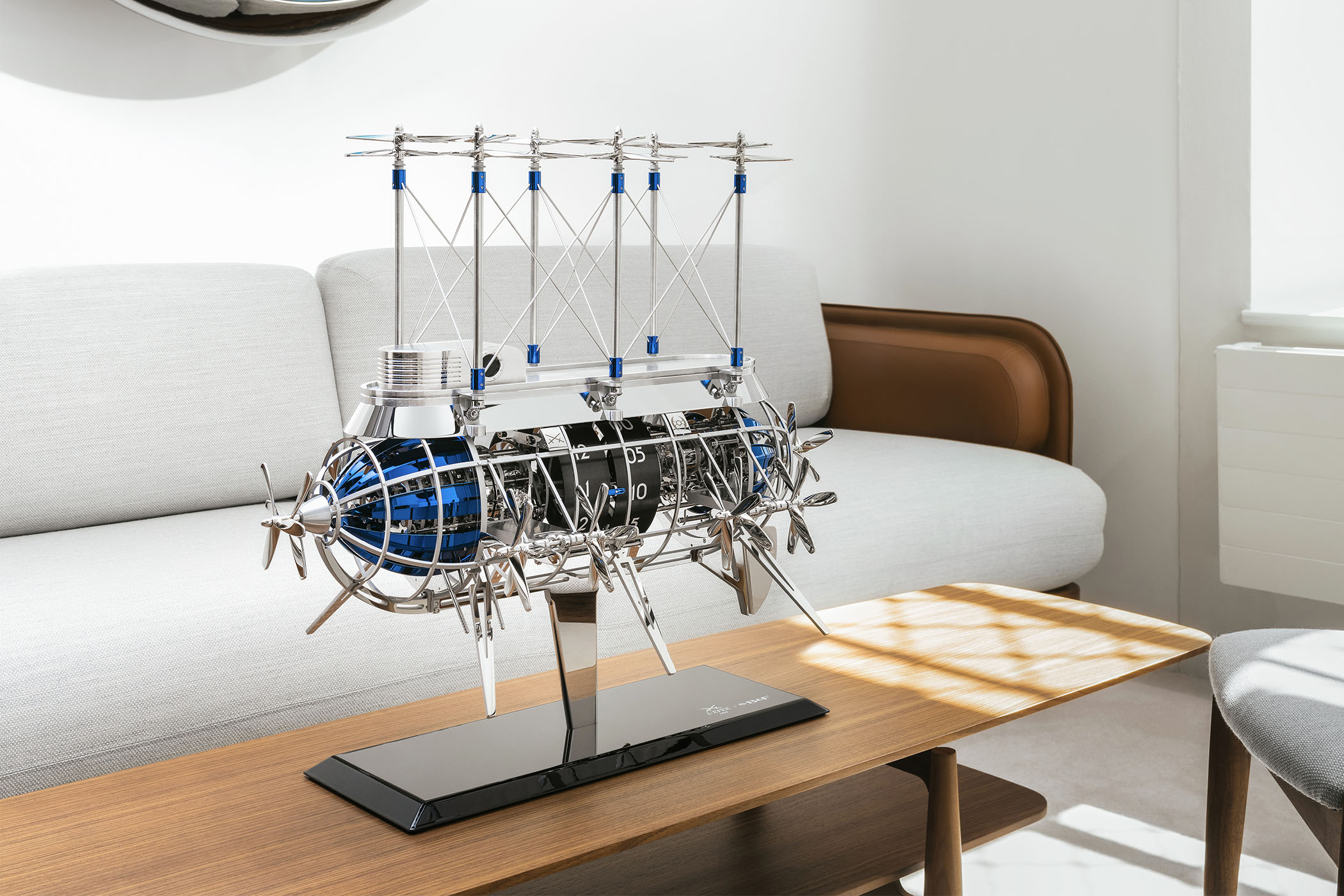
In 10 years, MB&F and L’Epée 1839 (recently acquired by LVMH) have created no fewer than 15 clocks, all more impressive and creative than the next. Far from the dust-collecting clock you’ll find on your favourite aunt’s mantlepiece, the collaboration between these two watchmakers has resulted in robots, octopods and sci-fi vessels from another world. Today, the two companies present Albatross, which is by far their most technically audacious co-creation. An undefined flying ship of vintage steampunk inspiration, it won’t go unnoticed.
The brainchild of designer Eric Meyer, Albatross was inspired by the Albatross airship in Jules Verne’s novel Robur the Conqueror, but also more generally by the rockets and hot air balloons imagined by the French author, who had a fascination for flying objects. Verne has long been a source of inspiration for Büsser, who used the steampunk cues to create an entire collection of watches, the Legacy Machines.
What is Albatross? In short, a retro-futuristic Zeppelin made of a whopping 1,520 components, featuring a striking hour function – chiming both the specific hours on the hour and a single strike on the half-hour – and an automaton composed of 16 pairs of propellers that launch into action every hour. The L’Epée 1839 X M &F Albatross technical specifications are nothing short of impressive. Measuring 60cm long by 60cm high and 35cm wide, its brass, steel, and aluminium body and frame weigh 17kg (don’t expect to hide it from your wife). It is available in five different translucent cold lacquers: blue, red, green, champagne, or black.
Inside what could be seen as a flying vessel are two movements and two winding systems. The first one powers the time and striking hour, thanks to two separate barrels, and is manually wound via the propellers at the front of the flying machine: clockwise for the striking hour and anti-clockwise for the time. The second movement provides the energy for the propellers, powered by a third barrel. The propellers at the back wind the automaton. And as often with movements made by L’Epée 1839, the Albatross runs for an average of eight days – whether the chiming function is turned on or off – and the automaton for one day.
Also, Albatross has a mechanical system inside that allows its future owner to turn the action on or off, as desired. Thanks to the two movements, it is possible to have the propellers turn without the hour chime and vice versa. There are also two on-demand buttons to chime the time and/or turn the propellers separately. The 16 propellers work in pairs, turning together to give the impression that they are going faster. They turn at a speed of 7 seconds for half a turn, or 14 seconds per turn, so they always remain visible and don’t create any wind. The propellers on the left side of the spaceship turn one way, while those on the right side go the other way.
Once again, an object that’s hardly explainable or justifiable – hence its desirability – the L’Epée 1839 X MB&F Albatross is released in five limited editions of only 8 pieces each. Price is to be confirmed. For more details, please visit mbandf.com.

